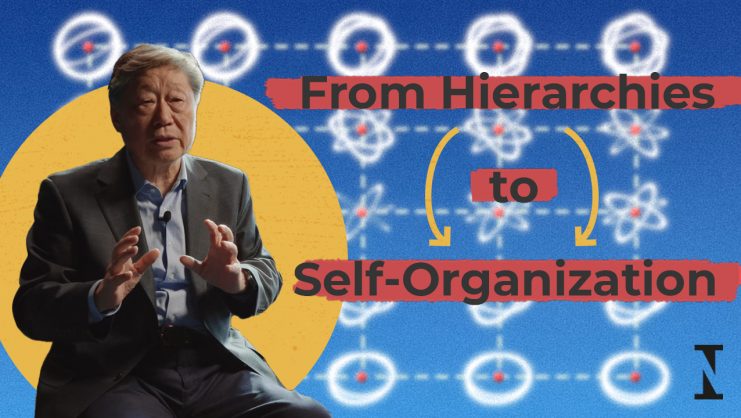Workplaces are suffering a crisis of engagement. Phrases like ‘quiet quitting’ and ‘the Great Resignation’ seized headlines in the wake of the pandemic, capturing the climate of job dissatisfaction at the time – but it would be a mistake to characterize this trend as a phase. Gallup’s 2023 Global Workplace report reveals that nearly 60 percent of employees around the world feel detached from their work. This inflicts a heavy burden on the global economy. Low engagement at work costs nine percent of global GDP – equivalent to $8.8 trillion.
In a separate 2023 survey, Gallup also found that only six percent of French employees felt engaged at work – and this is despite France being the world’s seventh-largest economy, with one of the highest productivity rates in Europe. Such detachment is not a new trend, however. As far back as the early 2000s, Gallup recorded that almost three-quarters of employees in the US were not engaged at work.
Conventional wisdom suggests that thriving economies and high productivity should translate into happy and engaged workforces. So, what’s getting in the way?
According to research from Donald Sull of MIT Sloan School of Management, Charles Sull of CultureX, and Ben Zweig of Stern School of Business, toxic corporate culture is currently the biggest factor pushing workers out the door. This encompasses unethical behaviors, workers feeling disrespected, and failure to promote diversity, equity, and inclusion in the workplace.
Based on their analysis of 34 million online employee profiles, the researchers identify other factors at play too, such as job insecurity and – surprisingly – high levels of innovation. This may be because staying at the cutting edge of innovation requires employees to put in longer hours, work at a faster pace, and endure more stress. The work can be fulfilling, but not necessarily sustainable long-term. Nevertheless, their findings indicate that toxic corporate culture is by far the strongest predictor of a firm’s likelihood of losing employees.
Of course, leadership plays a large role in channeling the corporate culture. Leaders can either exacerbate or relieve employees’ stress. A study by Birgit Schyns of NEOMA Business School with Iris Gauglitz of the University of Bamberg, Sarah Gilmore of Cardiff Business School, and Karolina Nieberle of Durham University, revealed that, during the Covid-19 pandemic, covert narcissistic leaders caused their employees extra irritation, which contributed to workers experiencing more extreme feelings such as burnout.
Fortunately, narcissism affects a relatively small part of the population – less than six percent of people in the US, for example. It’s important to recognize, though, that covert narcissism is by nature difficult to detect and a single narcissistic leader has the potential to impact a large number of employees – and various research shows that narcissism is more prevalent in high-level leadership positions. Schyns’ research also reflects the broader point that ineffective or even malicious leadership can have a strong effect on the wellbeing of employees and may push them closer to the point of resigning.
These examples reflect the ways that companies and management are prompting employees to consider checking out. It’s also true, of course, that the workers themselves have changed. By 2025, Millennials will comprise 39 percent of the workforce and Gen Z will account for another 23 percent. On average, both groups spend less time at a company before seeking work elsewhere than previous generations. For example, Gen Z employees stay with an employer for two years and three months on average. Millennials tend to last six months longer. In comparison, Gen X employees spend an average of five years in the same job, and Baby Boomers persist for an average of eight years.
These changing patterns of work underscore different generational approaches to forging a career. While older generations may be more motivated by the stability or prestige of holding one position for a long time, Gen Z, who grew up through the global financial crisis, show less interest in staying with their employers long term and are happy to move elsewhere if they feel their needs are not being met.
Employees are more likely to be engaged in a company that invests in them.
If companies want to reenergize their employees, it will require a certain level of negotiation. The most important first step is considering what employees want and need from their employers to feel invested in the company again.
One of the most seismic shifts in people’s working behavior since the pandemic is the steep rise in remote or hybrid working. Flexible working arrangements allow employees to enjoy a healthier work-life balance, with more time for family and friends, while also allowing them to better focus on their work with fewer distractions, according to the Chartered Institute of Personnel and Development.
In fact, hybrid working can provide the ‘best of both worlds’, offering employees greater flexibility while also preserving social bonds between colleagues, according to research from Prithwiraj Choudhury, Tarun Khanna, Kyle Schirmann of Harvard Business School with Christos Makridis of W.P. Carey School of Business. They analyze employees at the headquarters of BRAC, the world’s largest non-governmental organization, and find that intermediate levels of working from home – spending between 23-40 percent of your time in the office – is associated with employees sending more emails as well as expressing more positive sentiments in their emails. This indicates that well-constructed hybrid working policies can be beneficial both for employee performance and wellbeing.
Nevertheless, some bosses view the shift towards hybrid working with skepticism. A report from Resume Builder last year found that 90 percent of companies planned to implement return-to-office policies by the end of 2024. Many go a step further. Close to 30 percent said they would threaten to fire employees who don’t comply with the mandates.
Much of this is motivated by concerns that working from home reduces productivity. It’s certainly true that remote working makes it harder for managers to monitor employees and some have opted for using surveillance software to keep a close eye on employees while they work from home. This new wave of worker surveillance came to the fore during the pandemic – the “pandemic panopticon” according to Antonio Aloisi of IE Law School and Valerio De Stefano of Osgood Hall Law School – and this intense monitoring can leave workers feeling both “physically and intellectually exhausted.”
The key to understanding this piece of the puzzle is actually quite simple. Organizations that neglect their employees’ wishes will find it harder to get people invested in their work. While a level of compromise is required on both ends to implement effective hybrid working policies that benefit the firm and employees, bosses who treat their workers as untrustworthy and in constant need of being monitored are likely to create more stressful work environments, which lead to higher turnover.
In addition to flexible working arrangements that allow for a better work-life balance, employees want opportunities to grow in their careers. It’s in a company’s interest to help employees develop new skills and wear different hats, to make both lateral and upward moves. Simply put, employees are more likely to be engaged in a company that invests in them. According to a report from LinkedIn, 94 percent of employees said they would stay with a company for longer if it invested in their career development. Compare this against results from a Pew Research survey which finds that 63 percent of US workers who quit their positions in 2021 cited no opportunity for advancement as a reason why.
In responding to employees’ needs and desires, the first action firms should take is ensuring they have robust training, development, and leadership programs with a tangible focus on diversity and sustainability. This provides opportunities for employees from all backgrounds to advance in their careers (and earnings), in addition to showing employees that their work has a positive impact on the organization and society around them.
Training and development programs also open the door for hiring smart and motivated employees. Perhaps these workers do not have the exact skills for the job, at least upon joining the company, but their motivation to learn on the job means they will be highly engaged and loyal to a company that took a chance on them.
Roles should be tailored to individuals’ talents as much as possible. This practice shows that employees are seen and valued by leadership while also maximizing the workforce’s effectiveness. Thus, communication between employees and senior leadership should be a two-way street, allowing each to clearly articulate their needs and goals, thereby achieving a balance in flexible work and in general.
The wisest path forward, supported by research, is a moderate level of remote work, with slightly more time spent in the office than at home. While employees are working off-site, managers should resist the urge to micromanage, and meetings should be scheduled in advance to avoid putting undue stress on employees who might begin to worry that their manager could spring a check-in on them at any time.
Underlying all these measures is the simple premise that employees who feel trusted and valued are more likely to be invested in their work, engaged with their company, and more likely to remain as productive and innovative employees of the company.
© IE Insights.











